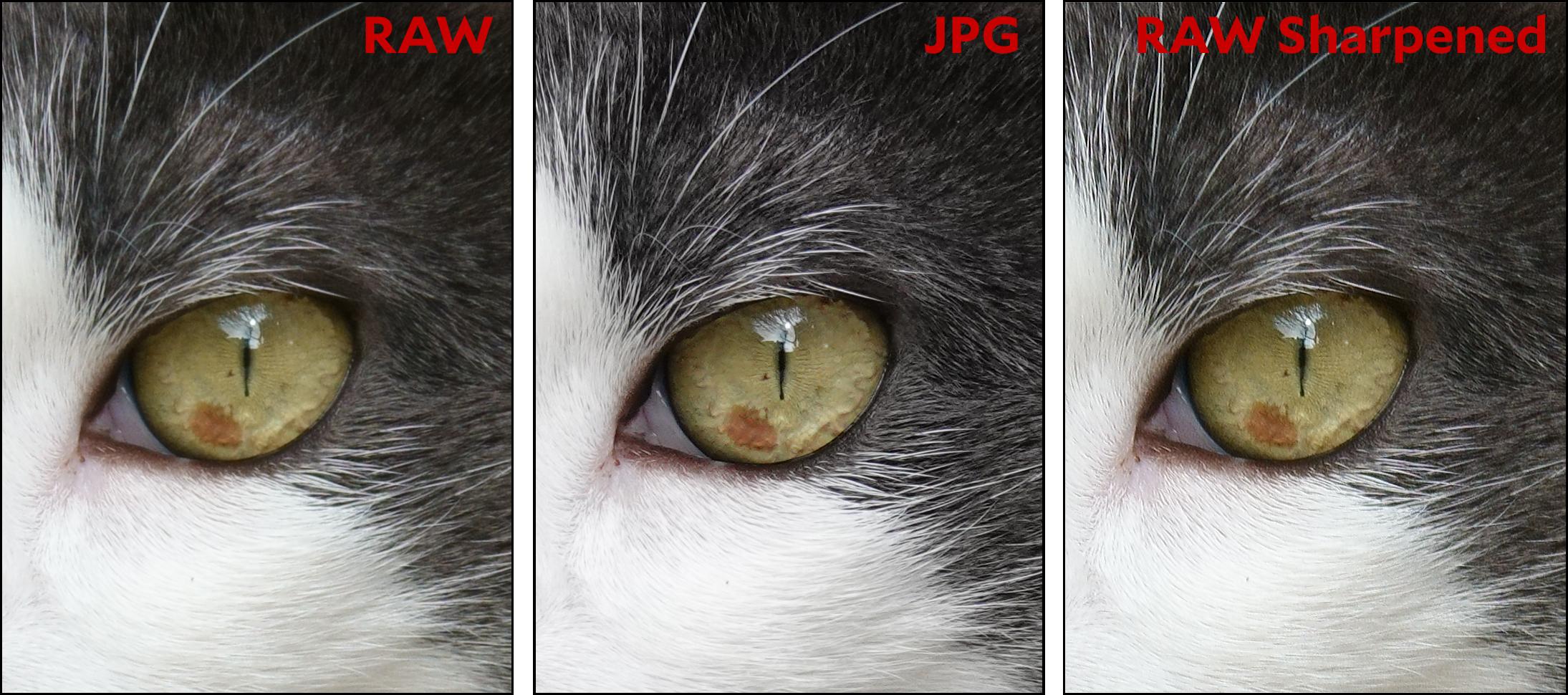I mentioned this afternoon that my picture of Hopper with the new camera was so sharp it was almost too sharp. In fact, when I first took the picture last Monday I wondered if there was more than just a high-quality lens at work. Maybe the imaging engine was a little too aggressive on the sharpening front? Today, catblogging reminded me of this and prompted me to find out. I reset the camera to produce both JPG and RAW images and then went outside to take some more pictures of Hopper.
Neither the weather nor the cat were especially cooperative, but I did get some pictures. The best one is below. On the left is the RAW image straight out of the camera. Next is the JPG image straight out of the camera. Finally there’s the RAW image manually sharpened to match the JPG image. As usual, right click if you want to view the images full size.

The RAW image is fine, but the JPG image is obviously sharpened even further. That’s not unusual; the question is how much it’s sharpened. So I manually sharpened the RAW image to try to match the JPG, which would give me a sense of just how much sharpening was going on internal to the camera. Answer: a fair amount.
Not a huge amount, but it’s not a light touch either. I often sharpen images, and I never use as much sharpening as I had to in order to match the camera’s JPG file. I’ve now dialed back the internal sharpening slightly and we’ll see what that looks like. The only other alternative is to shoot in RAW and do all the image processing myself. I’m not up to that yet—at least, not until I get an imaging app that can work easily with the Sony RAW format. There’s nothing very hard about that, but I haven’t done it yet. Maybe later.

















